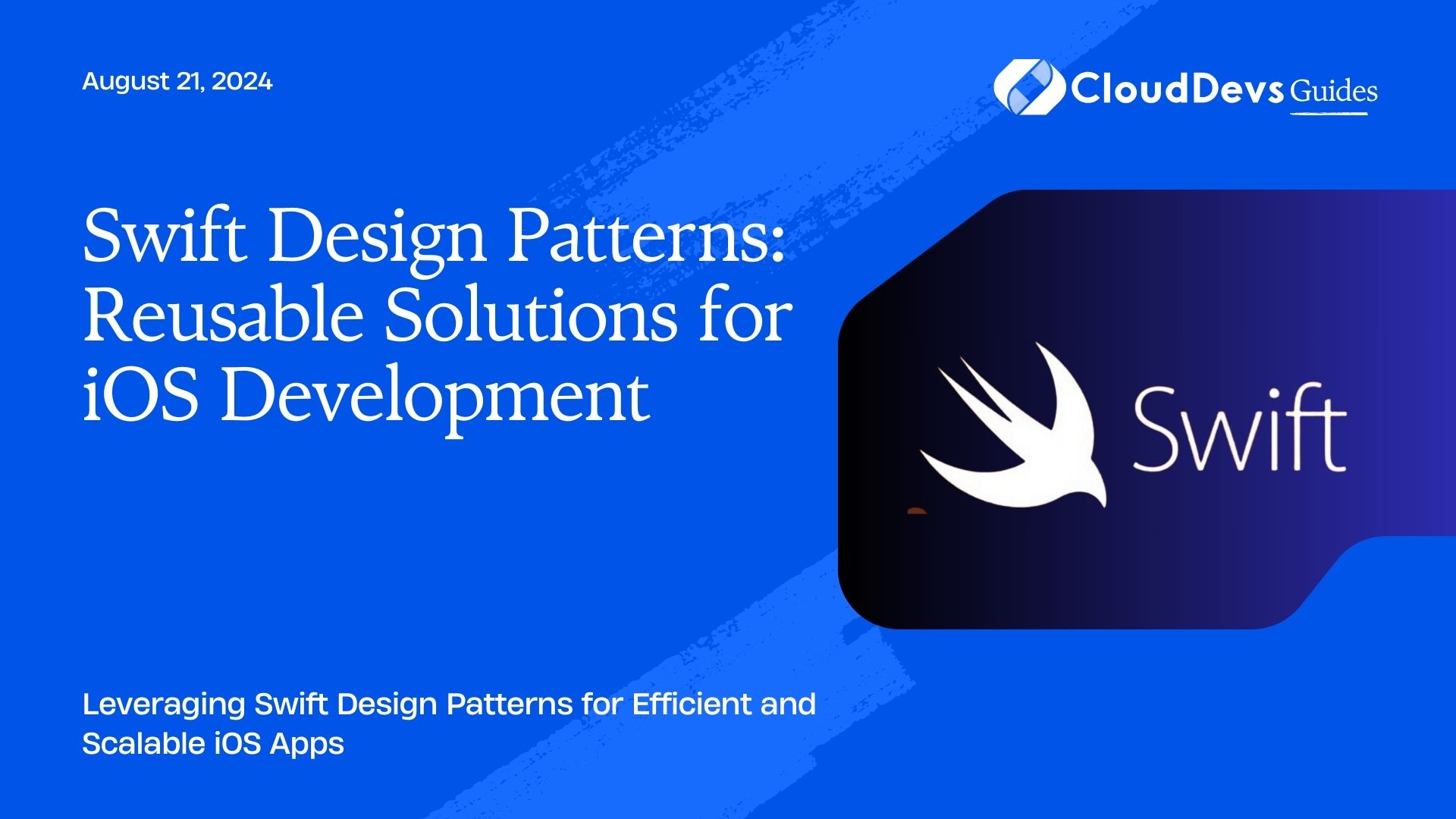Swift Design Patterns: Reusable Solutions for iOS Development
Design patterns are fundamental to creating well-structured and maintainable code. In Swift, leveraging design patterns can help streamline your iOS development process, leading to more efficient and scalable applications. This article delves into key design patterns used in Swift and provides practical examples of how to implement them.
Understanding Design Patterns in Swift
Design patterns are general reusable solutions to common problems that occur during software development. They help in creating flexible and maintainable code by promoting best practices and reducing code duplication. In Swift, several design patterns can be particularly useful for iOS development.
Common Swift Design Patterns
1. Singleton Pattern
The Singleton pattern ensures that a class has only one instance and provides a global point of access to it. This is useful for managing shared resources like configuration settings or network managers.
Example: Implementing a Singleton in Swift
```swift
class NetworkManager {
static let shared = NetworkManager()
private init() {
// Private initializer to ensure only one instance
}
func fetchData(from url: String) {
// Implementation of data fetching
}
}
```
Usage:
```swift NetworkManager.shared.fetchData(from: "https://example.com") ```
2. Observer Pattern
The Observer pattern allows an object (subject) to notify other objects (observers) about changes in its state. This is often used for implementing event handling systems.
Example: Implementing the Observer Pattern in Swift
```swift
protocol Observer {
func update(data: String)
}
class Subject {
private var observers = [Observer]()
func addObserver(observer: Observer) {
observers.append(observer)
}
func notifyObservers(data: String) {
for observer in observers {
observer.update(data: data)
}
}
}
class ConcreteObserver: Observer {
func update(data: String) {
print("Received data: \(data)")
}
}
```
Usage:
```swift let subject = Subject() let observer = ConcreteObserver() subject.addObserver(observer: observer) subject.notifyObservers(data: "New Event Data") ```
3. Factory Pattern
The Factory pattern defines an interface for creating objects but allows subclasses to alter the type of objects that will be created. This is useful for managing object creation in a flexible way.
Example: Implementing the Factory Pattern in Swift
```swift
protocol Product {
func doSomething()
}
class ConcreteProductA: Product {
func doSomething() {
print("Product A")
}
}
class ConcreteProductB: Product {
func doSomething() {
print("Product B")
}
}
class ProductFactory {
static func createProduct(type: String) -> Product? {
switch type {
case "A":
return ConcreteProductA()
case "B":
return ConcreteProductB()
default:
return nil
}
}
}
```
Usage:
```swift
if let product = ProductFactory.createProduct(type: "A") {
product.doSomething()
}
```
4. MVC Pattern
The Model-View-Controller (MVC) pattern separates an application into three interconnected components: Model, View, and Controller. This pattern helps in organizing code and improving scalability.
Example: Implementing MVC in Swift
```swift
// Model
struct User {
let name: String
}
// View
class UserView {
func displayUser(user: User) {
print("User: \(user.name)")
}
}
// Controller
class UserController {
private let view: UserView
private var user: User
init(view: UserView, user: User) {
self.view = view
self.user = user
}
func updateView() {
view.displayUser(user: user)
}
}
```
Usage:
```swift let user = User(name: "John Doe") let view = UserView() let controller = UserController(view: view, user: user) controller.updateView() ```
Conclusion
Swift design patterns provide powerful solutions for common challenges in iOS development. By using patterns like Singleton, Observer, Factory, and MVC, you can enhance code reusability, maintainability, and scalability. Understanding and applying these patterns will lead to more efficient and structured development practices, ultimately resulting in better applications.
Further Reading:
Table of Contents








